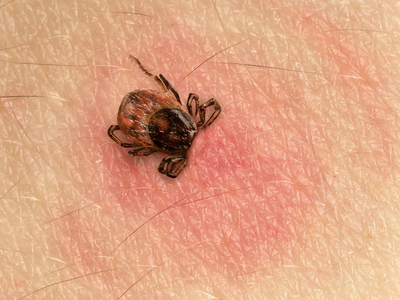What Do You Know About Rocky Mountain Spotted Fever?
- Esther M.
- Feb-16-2022
- Pest Control
Tick control in Columbia, MD and any other part of the American continent is a major concern. That’s because these pests are disease vectors, transmitting deadly diseases if not managed properly. But for the residents of Columbia, MD, also named “the Best Small City in America”, the presence of ticks is a real threat.
Since this city not only has a large population but also attracts many people for recreational and business endeavors, there’s need to be extra vigilant. Ticks don’t care how important your city is, or the role it plays in the economy of the country. All they know to do is survive on a bloodmeal as they work towards the continuation of their existence by multiplication. This post will focus on one of the deadly diseases transmitted by ticks- RMSF.
What is RMSF?

For starters, what is Rocky Mountain Spotted Fever? Does it occur only on the Rocky Mountain? Find out more in the following post:
Rocky Mountain spotted fever (RMSF) is an illness caused by infection with the bacterium Rickettsia rickettsia, which is transmitted by a bite from infected ticks…
How Do People Get Rocky Mountain Spotted Fever?
The bacterium Rickettsia rickettsia that causes Rocky Mountain spotted fever is transmitted by the bite of an infected tick. The primary vectors (the agents that transmit infection) for RMSF in the U.S. are the American dog tick (Dermacentor variabilis), the Rocky Mountain wood tick (Dermacentor andersoni), and the brown dog tick (Rhipicephalus sanguineus). Read more at On Health
If you have a pet dog, you need to be very keen and check for ticks as often as possible to avoid RMSF transmission.
Symptoms of RMSF

Although RMSF is fatal, it doesn’t necessarily have symptoms that are unique to it. It is therefore very easy to mistake it for the normal flu or any other mild illness.
Signs and symptoms can include:
Fever; Headache; Rash
Nausea; Vomiting; Stomach pain
Muscle pain; Lack of appetite Read more at CDC
So, the best practice is to seek medical attention if these symptoms persist.
RMSF is often misdiagnosed

As we have seen the symptoms above, there is a great likelihood that one would get a misdiagnosis. This makes the process even more excruciating for the patient. This calls for great caution and every effort made to prevent transmission in the first place.
Fever, rash, and tick bite are noted in approximately 60% of RMSF patients; however, less than 3% have these symptoms in the first 72 hours, up to 11% do not develop a rash [1-6], and approximately 40% do not report a history of tick bite [1,7]. Gastrointestinal symptoms, such as anorexia, nausea, vomiting, and abdominal pain, are the more prominent features in up to 80% of RMSF patients; up to 45% of patients report diarrhea [8]. The gastrointestinal symptoms often precede the appearance of a rash by more than 72 hours and often mimic other pathologies, leading to diagnostic delay [4,6]. Consideration of erroneous diagnoses such as acute abdomen secondary to cholangitis or appendicitis, can lead to unnecessary workups that contribute to unnecessary risk and costs [2,5,8,9]. Read more at NIH
In all estimations, you’re better off safe than sorry. Thankfully, tick control is not a mystery.
At Backyard Bug Patrol, our goal is to ensure your family is safe from ticks and tick-related illnesses. Our barrier spray program will knock out any ticks in your yard dead on contact. Additionally, our backpack sprayers go deep into the vegetation in your yard, creating a repelling barrier against ticks. You can’t go wrong with us. Call us today and protect those you love from the vicious ticks.
Related posts:
- The Types Of Roaches That Might Invade Your Home
- Spider Season? Stay On Top Of The Web of Mystery They Seem To Be Spinning
- Ticks And Rodents: Three Perspectives On The Illnesses They Transmit
- Sneaky Rodents In Your Yard? They Might Not Be Moles!
- Rodent Control Is Necessary Because You Really Don’t Want These Diseases
